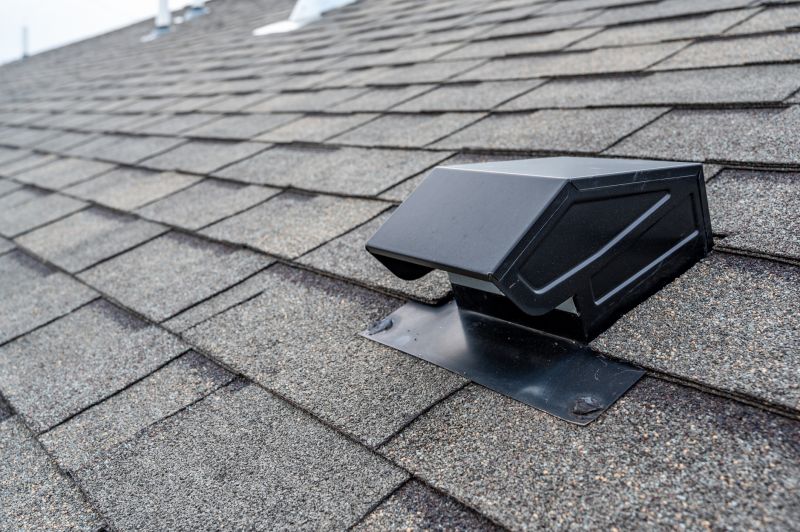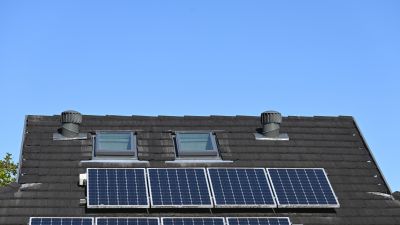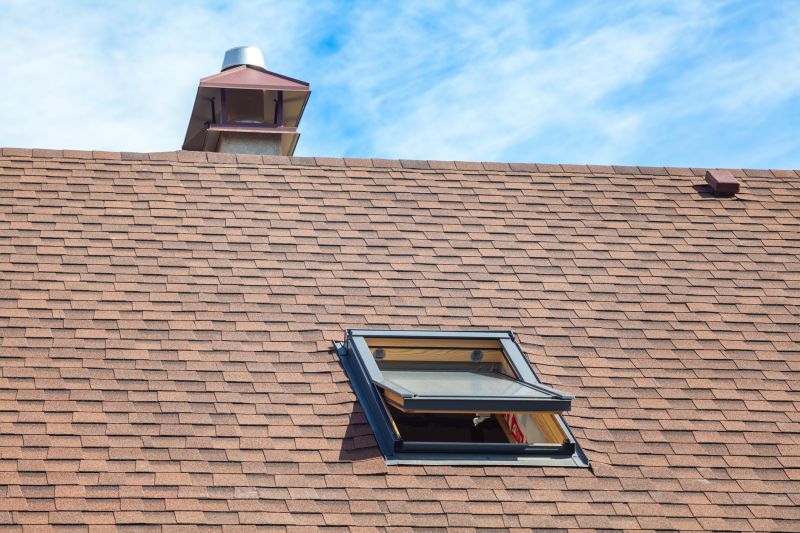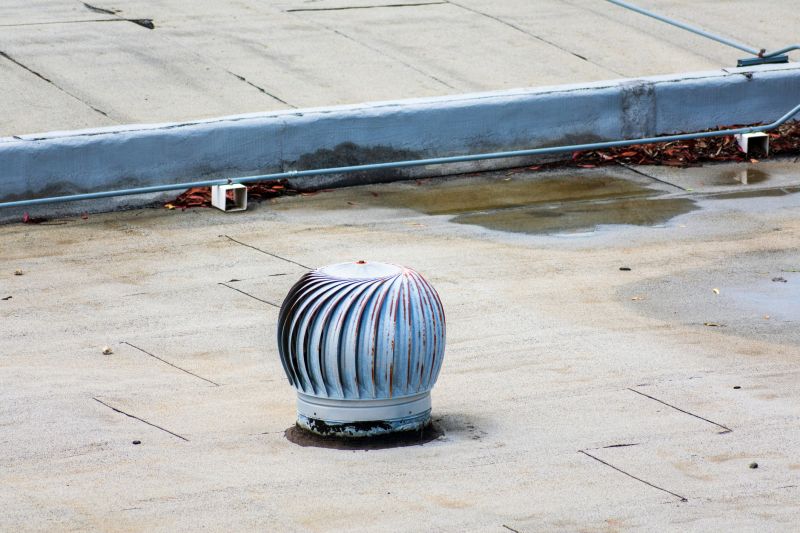Get Roof Vents Installation in Seattle, WA
Local contractors in Seattle can install roof vents to improve attic airflow, prevent moisture buildup, and address issues caused by heavy rainfall or snow.
Property owners in Seattle, WA, often find that proper roof ventilation is essential for maintaining a comfortable and durable home. Effective roof vents help regulate indoor temperatures, reduce moisture buildup, and prevent issues like mold and wood rot that can be caused by excess humidity. Whether planning a new roofing project or upgrading existing ventilation, exploring local contractors who specialize in roof vent installation can ensure the work is tailored to the specific climate and architectural styles common in the area. Keeping these factors in mind can make a significant difference in the long-term performance of a property.
For those considering roof vent installation, comparing options among local service providers can help identify experienced contractors equipped to handle the unique demands of Seattle homes. Proper planning and choosing the right professionals can lead to improved energy efficiency and overall home health. Continuing to explore available local solutions allows property owners to make informed decisions that support the longevity and comfort of their buildings.
- Attic Ventilation - homeowners in Seattle's Queen Anne neighborhood may need attic vents to improve airflow and reduce moisture buildup.
- Roof Vent Installation - residents in Portland, OR, seeking to enhance roof efficiency and prevent heat accumulation might consider professional vent installation.
- Gable Venting - homeowners in Denver, CO, looking to increase attic ventilation in older homes often require expert gable vent setup.
- Ridge Vents - property owners in Austin, TX, aiming for continuous ventilation along the roof ridge can benefit from specialized ridge vent services.
- Vented Eaves - those in Chicago, IL, needing to improve air circulation in eaves for better energy efficiency may connect with local contractors for installation.



Roof vent installation involves adding specialized vents to a property's roof to improve airflow and ventilation. These vents are typically placed on the roof surface and connected to the attic or roof cavity, allowing hot, moist air to escape. Proper installation ensures that the ventilation system functions effectively, helping to regulate indoor temperatures and prevent moisture buildup. Skilled contractors understand how to select the right type and placement of vents to maximize airflow, contributing to a healthier and more comfortable home environment.
One of the primary issues that roof vent installation can address is excess heat and humidity in the attic space. Without adequate ventilation, hot air can become trapped, leading to increased cooling costs and potential damage to roofing materials over time. Moisture buildup from everyday activities like cooking, bathing, or laundry can also cause problems such as mold growth and wood rot if not properly vented. Installing the right vents helps to mitigate these issues by providing a continuous escape route for heat and moisture, preserving the integrity of the roof and attic.
Different types of properties benefit from roof vent installation, including single-family homes, multi-family buildings, and even some commercial properties. Homes with poorly ventilated attics often experience higher energy bills and accelerated wear on roofing components. Ventilation is especially important in areas with warm or humid climates, where moisture and heat buildup are common. Service providers can assess the specific needs of each property and recommend the most suitable vent types-such as ridge vents, soffit vents, or attic fans-to ensure optimal airflow and climate control.
Homeowners who notice signs of poor attic ventilation, such as excessive heat in the summer, ice dam formation in winter, or persistent moisture issues, may benefit from professional roof vent installation. Proper ventilation can help extend the lifespan of roofing materials, improve indoor comfort, and reduce energy costs. Local contractors experienced in this service can evaluate a property’s current ventilation system, identify problem areas, and install the appropriate vents to promote better airflow. Contacting experienced service providers ensures that the job is done correctly and effectively to meet the specific needs of each property.
The overview below groups typical Roof Vents Installation projects into broad ranges so you can see how smaller, mid-sized, and larger jobs often compare in Seattle, WA.
In many markets, a large share of routine jobs stays in the lower and middle ranges, while only a smaller percentage of projects moves into the highest bands when the work is more complex or site conditions are harder than average.
Smaller Repairs - Typical costs for minor roof vent repairs or replacements generally range from $250 to $600. Many routine jobs fall within this middle range, depending on the vent type and roof accessibility. Fewer projects reach the higher end of the spectrum for more extensive repairs.
Standard Vent Installations - Installing new roof vents for standard residential roofs usually costs between $600 and $1,200. Local contractors often see many projects in this range, with larger homes or more complex setups pushing costs higher.
Full Roof Vent Replacement - Complete replacement of multiple roof vents or a full ventilation system can range from $1,200 to $3,500. Larger, more complex projects or older roofs may approach or exceed this range, but most fall within it.
Complex or Custom Projects - Custom or high-end roof vent installations, such as integrated attic ventilation systems, can cost $3,500 and up. These projects are less common and tend to involve specialized equipment or unique roof configurations.
Actual totals will depend on details like access to the work area, the scope of the project, and the materials selected, so use these as general starting points rather than exact figures.
Attic Ventilation Installation - local contractors skilled in roof vent installation often handle attic ventilation projects to improve airflow and energy efficiency.
Skylight Installation - professionals experienced with roof penetrations can also install skylights, requiring similar planning and tools as roof vent setup.
Roof Repair and Replacement - roof repair services often include installing or upgrading vents as part of comprehensive roof maintenance and replacement projects.
Chimney and Roof Flashing Services - installing vents requires careful flashing work, making chimney and flashing projects related in terms of planning and execution.
Gutter and Drainage System Installation - proper roof ventilation complements gutter systems to prevent moisture buildup, linking these projects in roof planning.
Roof Insulation Installation - effective roof venting is essential for insulation performance, so contractors often work on both to optimize attic climate control.

When evaluating potential contractors for roof vent installation, it’s important to consider their experience with similar projects in your area. Homeowners should look for service providers who have a proven track record of handling vent installation tasks on residential roofs comparable to their own. This ensures the contractor understands the specific requirements and challenges that can come with local roofing styles, weather conditions, and building codes. Asking for details about past work or examples of completed projects can help gauge whether a contractor has the relevant experience to meet your needs effectively.
Clear, written expectations are essential for a smooth project. Homeowners should seek out service providers who can provide detailed descriptions of the scope of work, the materials to be used, and the steps involved in the installation process. Having this information in writing helps prevent misunderstandings and ensures everyone is aligned on what will be done. It’s also helpful to clarify the contractor’s approach to any potential issues that could arise during installation, so expectations are transparent from the start.
Reputation and communication are key factors when comparing local contractors. Homeowners are encouraged to look for service providers who can offer reputable references or examples of previous work, which can provide insight into their reliability and quality of service. Good communication throughout the process-whether through prompt responses, clear explanations, or availability for questions-can make a significant difference in the overall experience. While this site connects homeowners with local pros, it’s important to remember that the site itself does not perform the work, but acts as a resource to help find qualified, experienced service providers in the area.
Property owners in Seattle, WA use Roof Vents Installation services for practical projects around their homes and businesses. This guide focuses on everyday jobs and straightforward project options.


Roof vent installation is a common project for property owners in Seattle who want to improve airflow and ventilation within their homes or commercial buildings. Many residents seek these services when experiencing issues like excess moisture, musty odors, or condensation buildup, especially during the rainy seasons. Local contractors can help install or upgrade roof vents to ensure proper air circulation, which can contribute to a healthier indoor environment and protect the roof structure from damage caused by trapped moisture.
Property owners might also look for roof vent installation services when planning a home renovation or energy efficiency upgrade. Proper ventilation can help regulate indoor temperatures and reduce cooling costs, particularly in older buildings that may lack adequate airflow. Local service providers can assess the existing roof setup and recommend suitable vent options to meet the specific needs of homes and businesses throughout the Seattle area.
What are roof vents and why are they important? Roof vents help improve attic airflow, prevent moisture buildup, and regulate temperature, which can protect the roof structure and improve energy efficiency.
What types of roof vents are available for installation? Common options include ridge vents, soffit vents, gable vents, and turbine vents, each suited to different roof styles and ventilation needs.
How do local contractors determine the right roof vent system? They assess the roof’s size, attic space, and existing ventilation to recommend the most effective vent types and placement for optimal airflow.
What should be considered when installing roof vents? Proper sealing, correct placement, and compatibility with the roof structure are key factors to ensure effective and durable ventilation.
Can roof vent installation be combined with other roofing work? Yes, many service providers can handle roof vent installation alongside other roofing or attic renovation projects for convenience and efficiency.
Improve attic ventilation - Installing roof vents can help reduce heat buildup and moisture in the attic, protecting the roof structure during hot or humid days.
Reduce energy costs - Proper roof vent installation can enhance airflow, making cooling more efficient and lowering air conditioning needs.
Prevent roof damage - Adequate ventilation helps prevent ice dams and moisture accumulation that can lead to rot or mold growth.
Enhance indoor comfort - Well-placed roof vents contribute to better air circulation, creating a more comfortable living environment year-round.

If you are thinking about Roof Vents Installation for a property in Seattle, WA, this guide is meant to help you understand the work, the typical project types, and how different options might fit your plans.
When you are ready, you can use the quote form on this page to share a few details about your project. From there, local pros can review the basics and respond with options that match what you have in mind.



